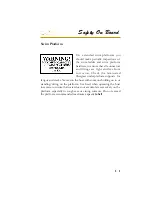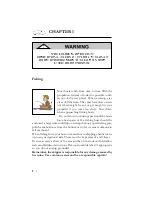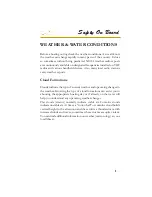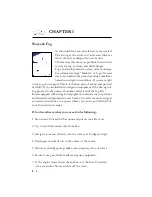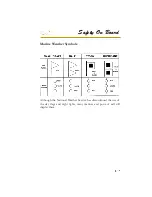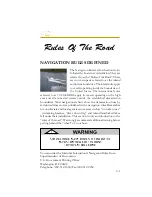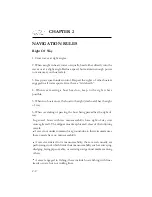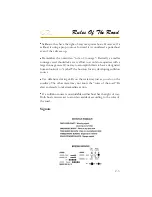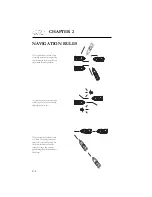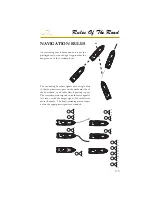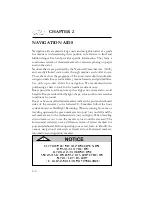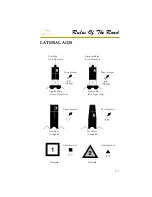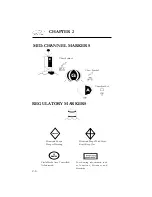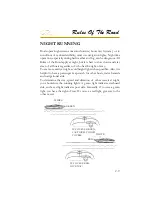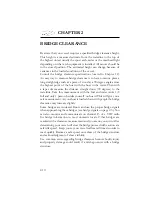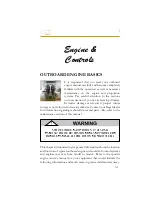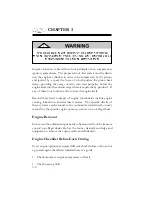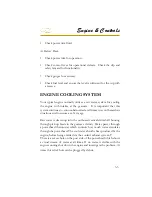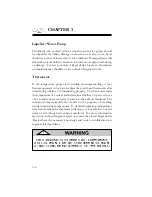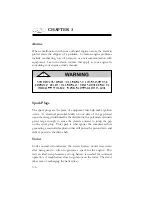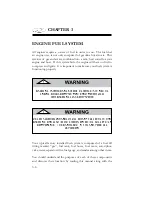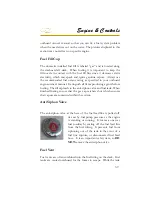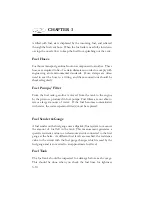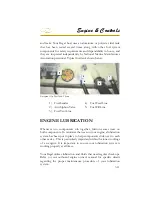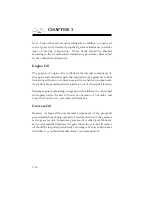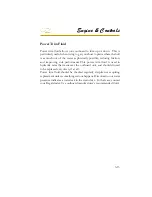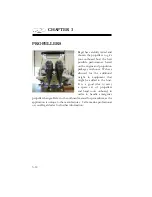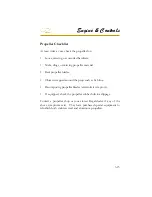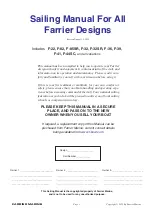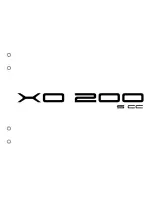
BRIDGE CLEARANCE
Be aware that your vessel requires a specifi ed bridge clearance height.
This height is a measured estimate from the waterline to the top of
the highest object usually the sport arch, radar or the masthead light
depending on what arch equipment is installed. All canvas should be
in the stored position. The estimated height can change because of
variances in the loaded condition of the vessel.
Consult the bridge clearance specifi cations located in Chapter 12).
An easy way to measure bridge clearance is to have someone place a
long straightedge such as a piece of wood at a 90 degree angle across
the highest point of the boat with the boat in the water. Then with
a tape rule measure the distance straight down (90 degrees) to the
waterline. Take this measurement with the fuel and water tanks 1/2
full and only 1 person besides yourself on board. This will give you a
safe measurement. As your boat is loaded down with people the bridge
clearance may increase slightly.
Some bridges are tendered. Know and use the proper bridge signals
when approaching these bridges (see bridge signals on page 2-3). You
can also monitor and communicate on channel 13 of a VHF radio
for bridge information in most domestic locals. Other bridges are
marked with a clearance measurement and you are on your own. After
determining your vessel will clear the bridge proceed with caution at a
safe idle speed. Keep your eye on vessel traffi c at all times in order to
react quickly. Resume a safe speed once clear of the bridge structure
and acknowledgment of clear visibility.
Use common sense regarding bridge clearance because bodily injury
and property damage could result if a mishap occurs with a bridge
structure.
2-10
CHAPTER 2
Summary of Contents for 29 OBX
Page 1: ...OWNER S MANUAL OWNER S MANUAL 29 OBX 29 OBX REGAL 281760 REGAL 281760 3 2016...
Page 2: ...THIS PAGE IS LEFT INTENTIONALLY BLANK...
Page 7: ...INT 7 Introduction THIS PAGE IS LEFT INTENTIONALLY BLANK...
Page 18: ...INT 18...
Page 38: ...u v u w CHAPTER 1 NAVIGATION LIGHT RULES...
Page 41: ...Safety On Board...
Page 94: ...Engine Controls 3 27 Typical Switch Shown Above...
Page 96: ...Engine Controls 3 29...
Page 162: ...Equipment Operation X Y Z Typical Dual Battery Switch Circuitry Front View...
Page 163: ...CHAPTER 6 _ Dual Battery Switch Circuitry Rear View...
Page 171: ...CHAPTER 6 CANVAS TRAVEL COVER...
Page 182: ...Equipment Operation Depth Gauge With Functions...
Page 196: ...Equipment Operation...
Page 257: ...Cosmetic Care Maintenance 7 35 Notes...
Page 262: ...Troubleshooting 8 5...
Page 263: ...CHAPTER 8 8 6...
Page 264: ...Troubleshooting 8 7...
Page 265: ...CHAPTER 8 8 8 0 1 0 2 3 4 5 6 2 4 6 7 8 9 2 3...
Page 273: ...CHAPTER 9 Notes...
Page 294: ...Technical Information 12 3 TYPICAL LABELS LOCATIONS Power Tower...
Page 299: ...Technical Information...
Page 305: ...Technical Information Note Locate per Splash...
Page 306: ...Technical Information...
Page 310: ...Technical Information TYPICAL HULL HARNESS BREAKOUT...
Page 311: ...Technical Information TYPICAL SWITCH PANEL BREAKOUT...
Page 312: ...Technical Information TYPICAL DASH CHARTPLOTTER BREAKOUT...
Page 313: ...Technical Information TYPICAL GARMIN YAMAHA NEMA 2000 NETWORK...
Page 324: ...Technical Information...

